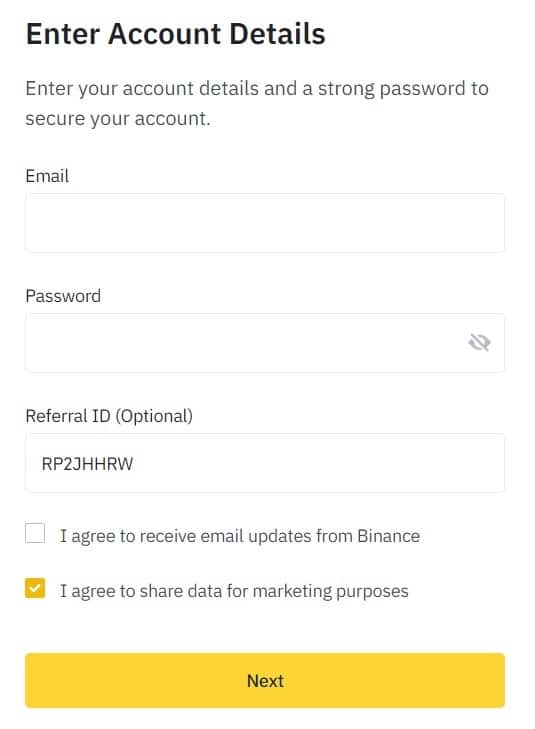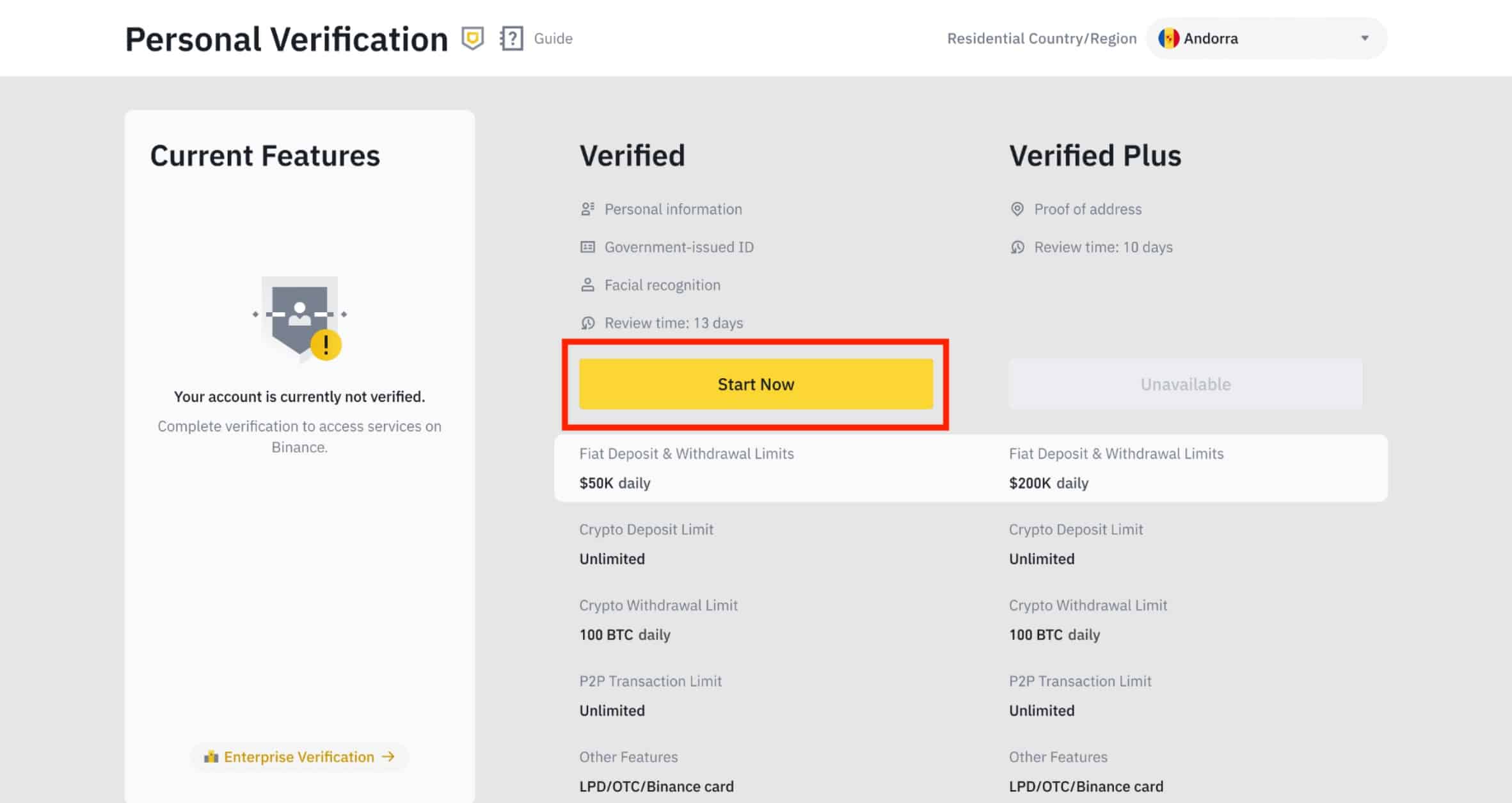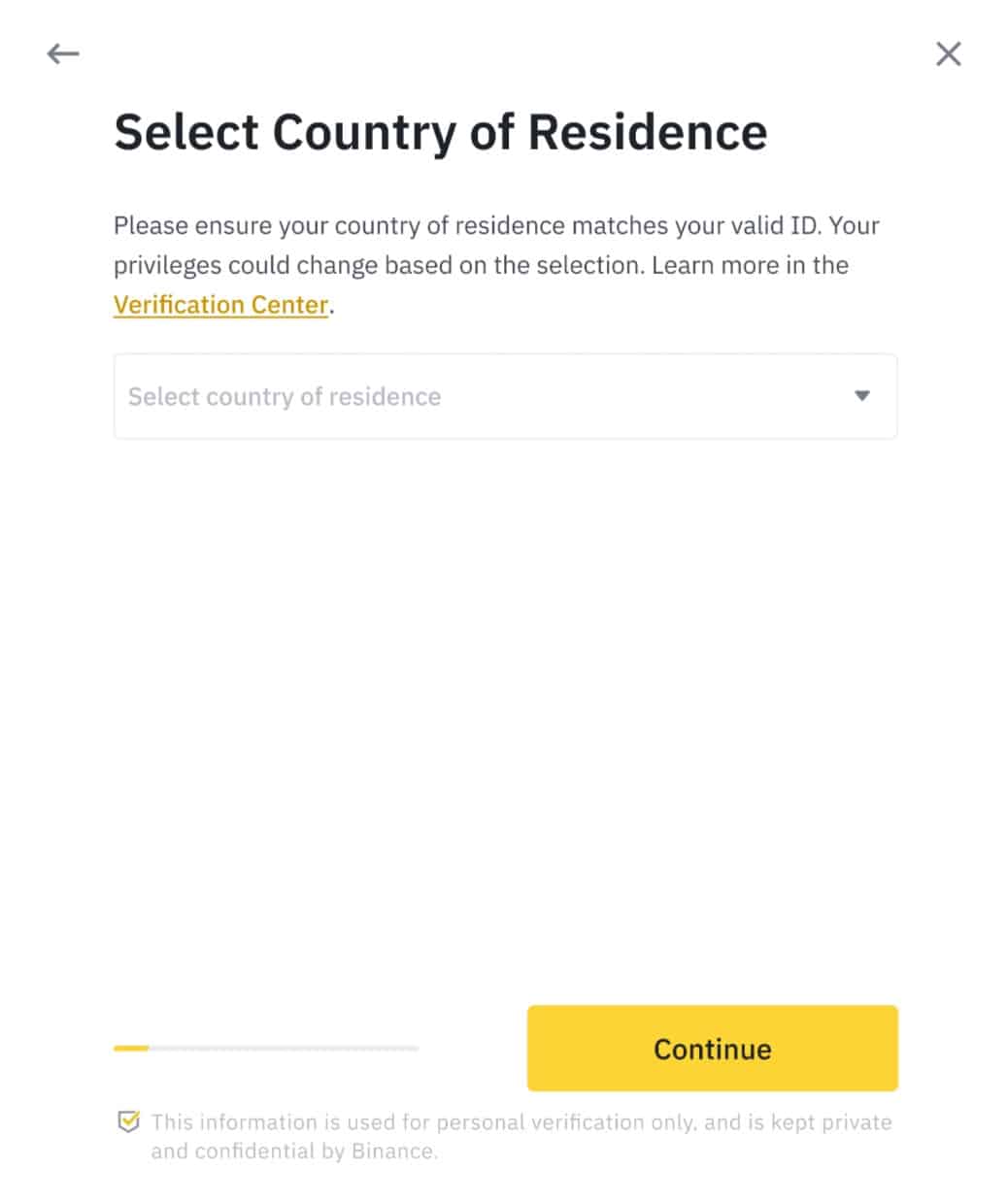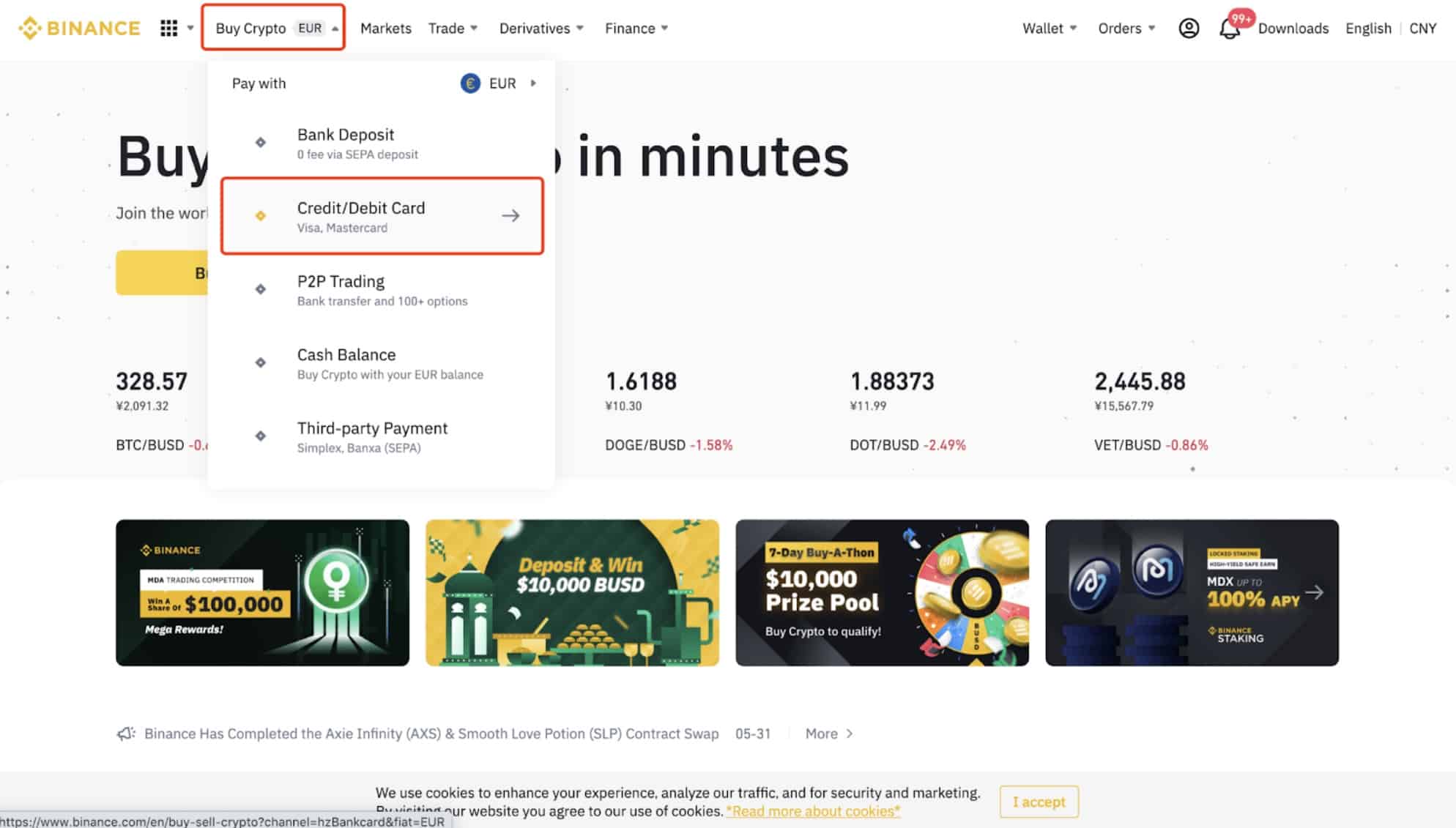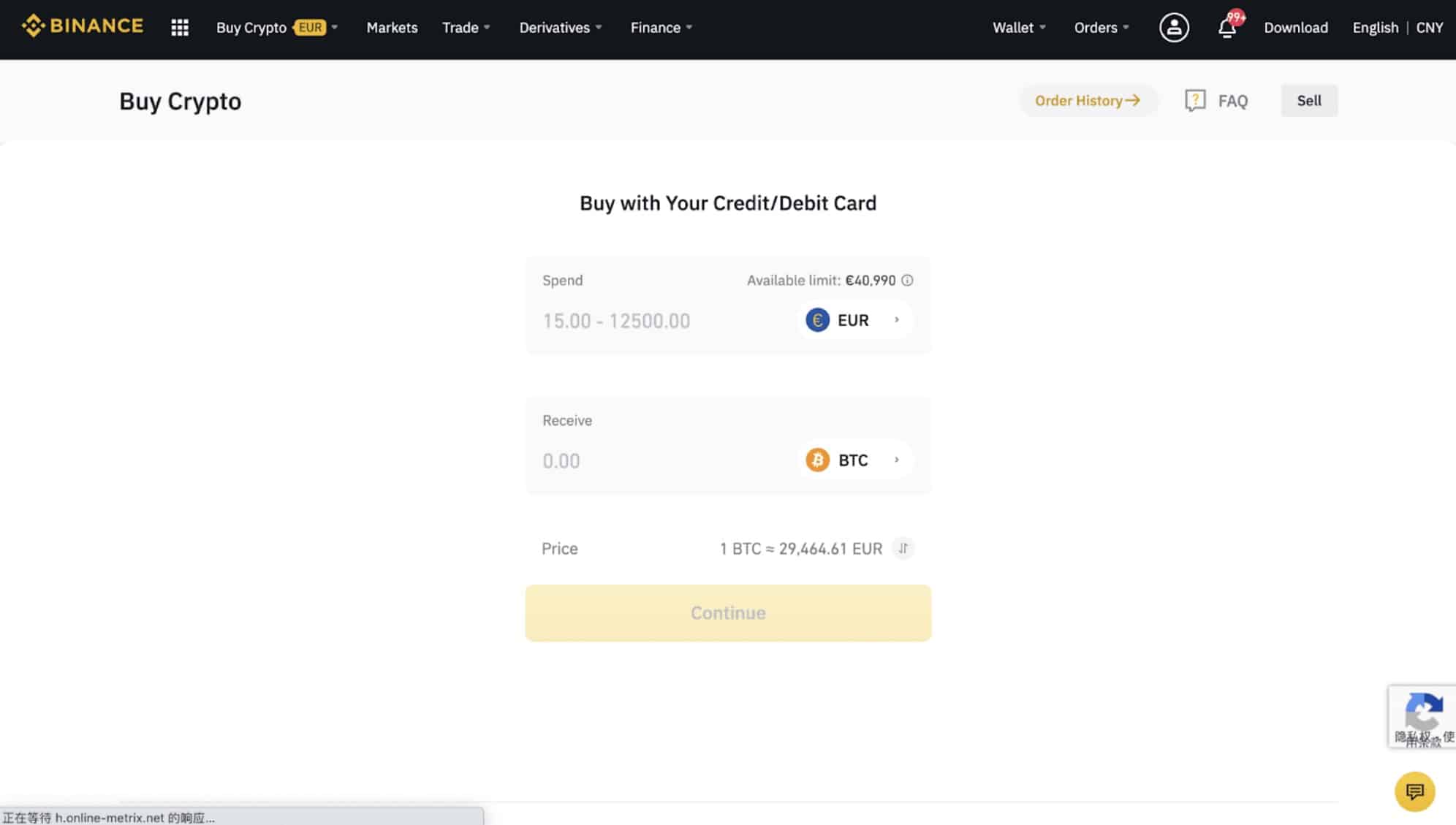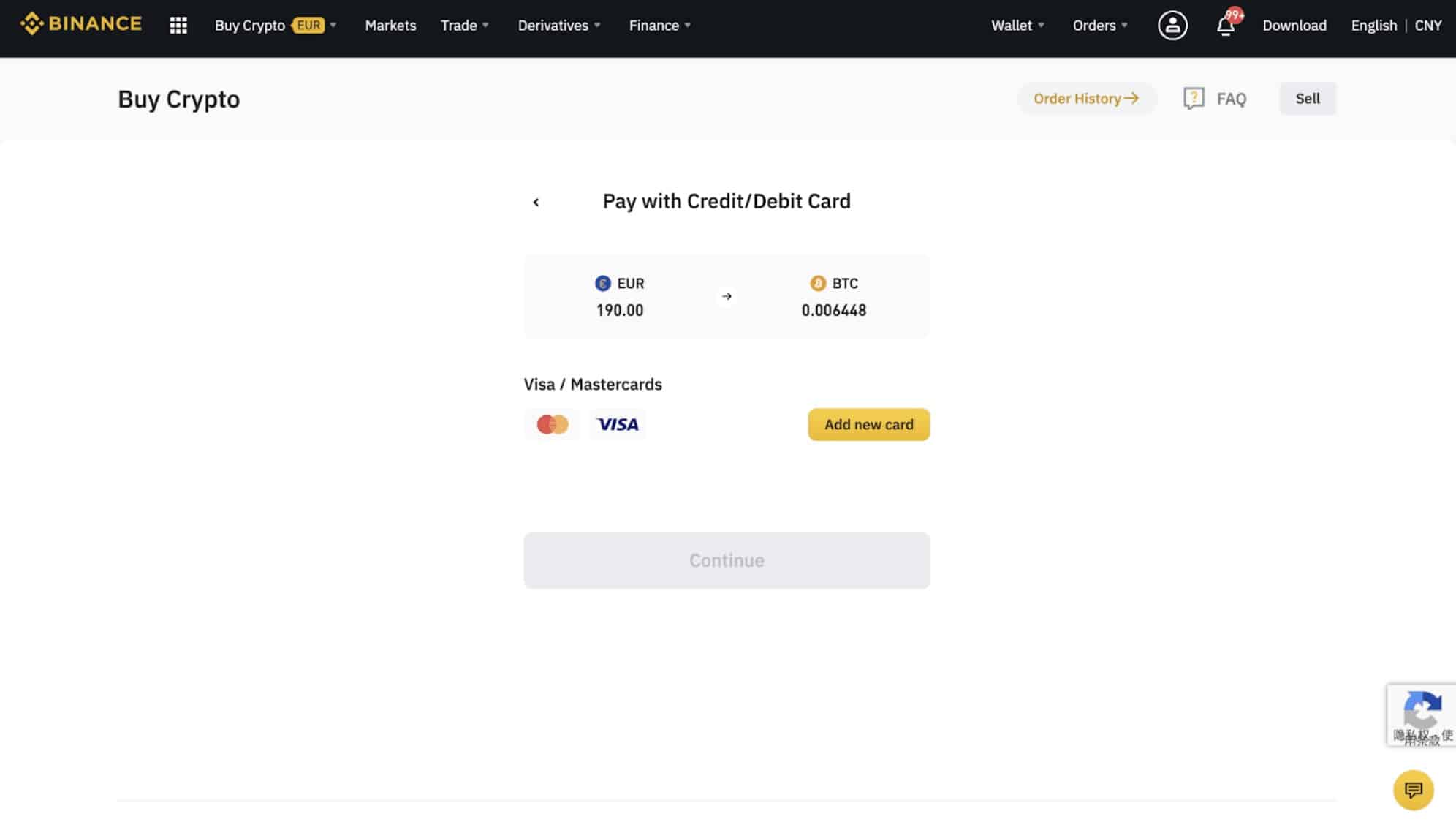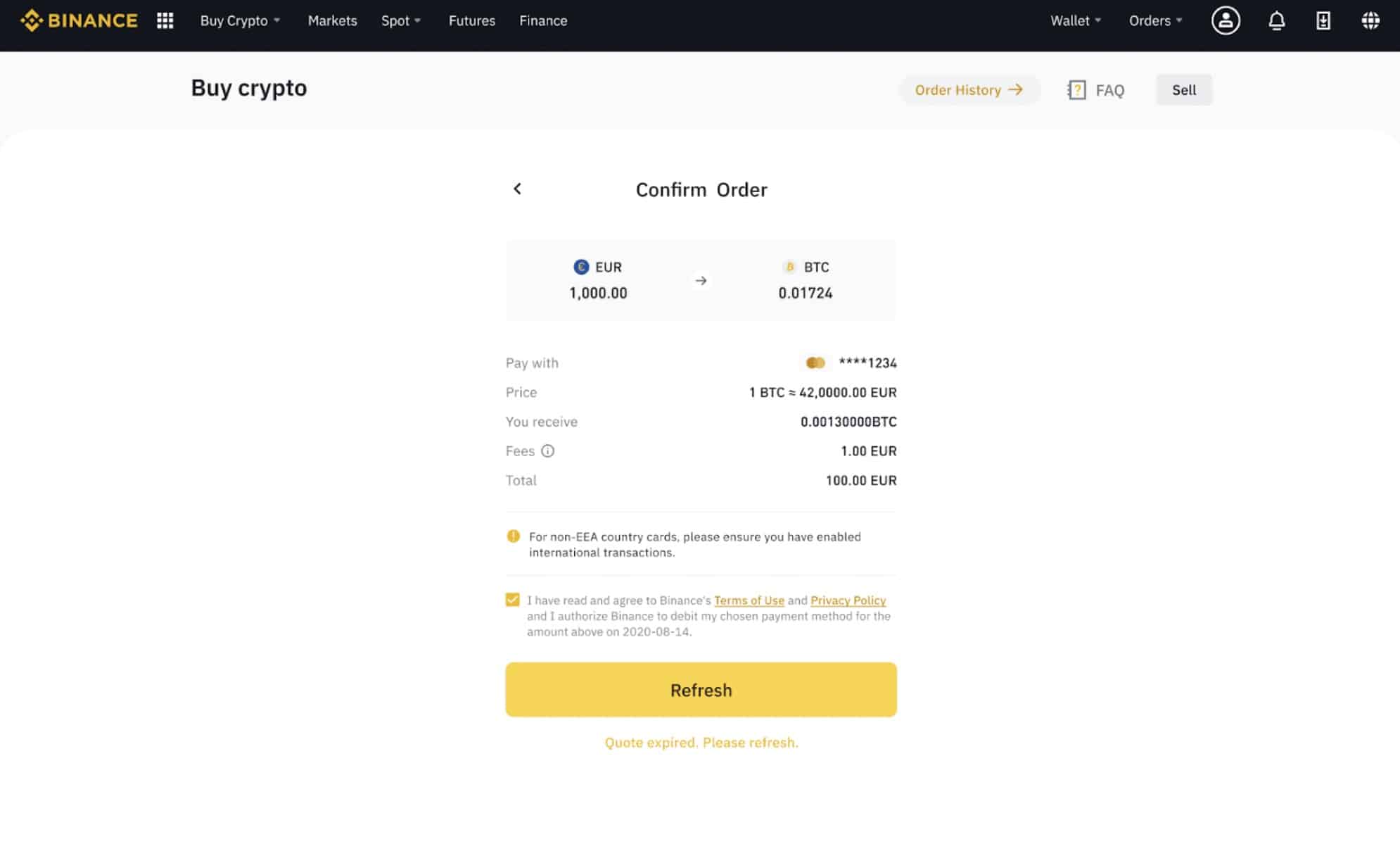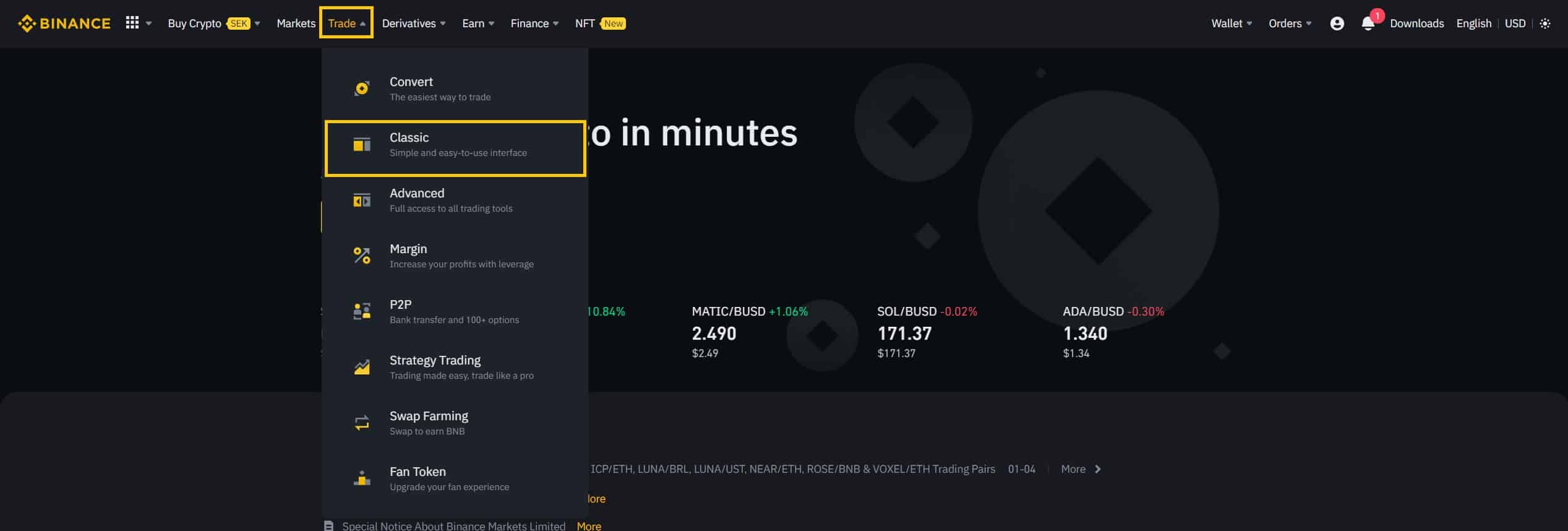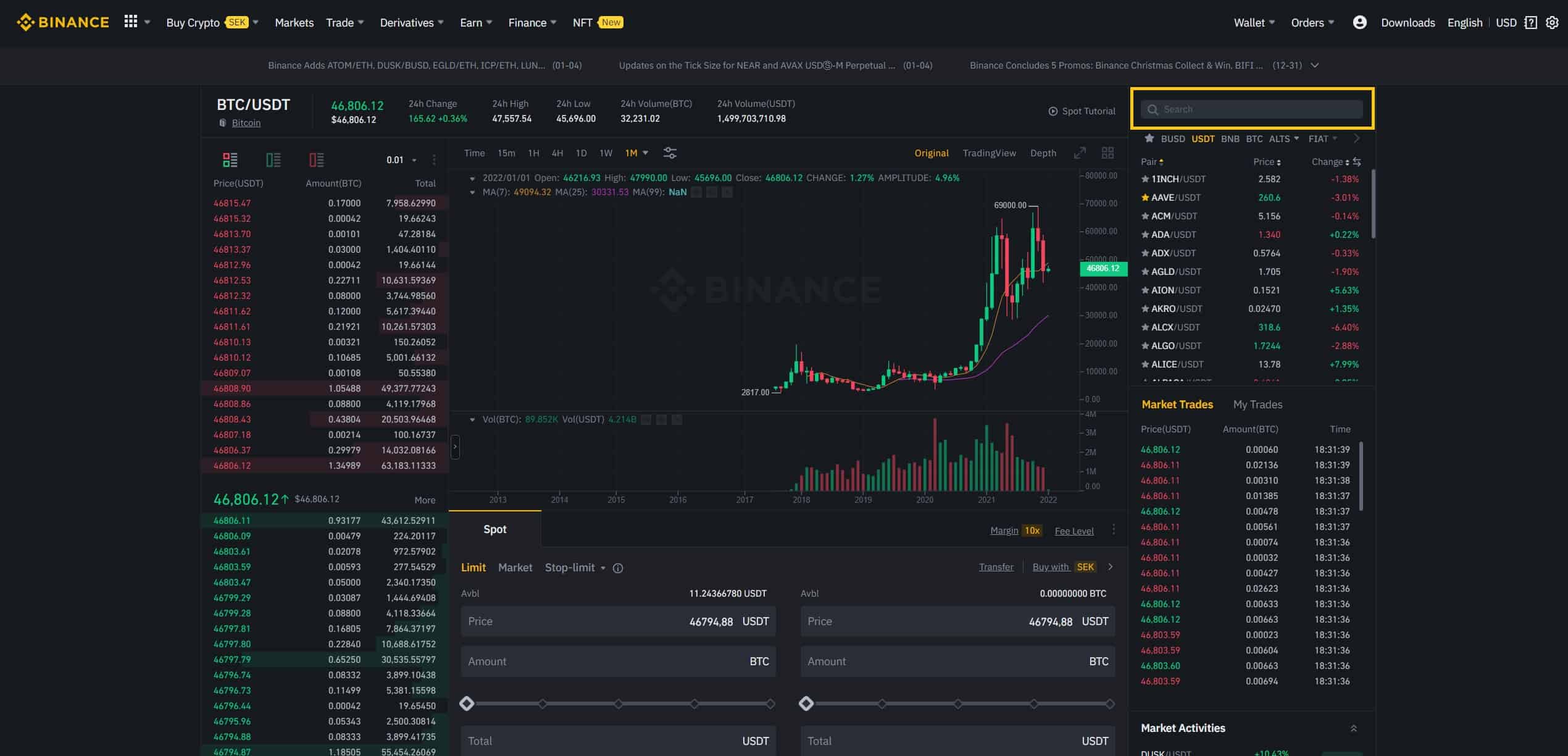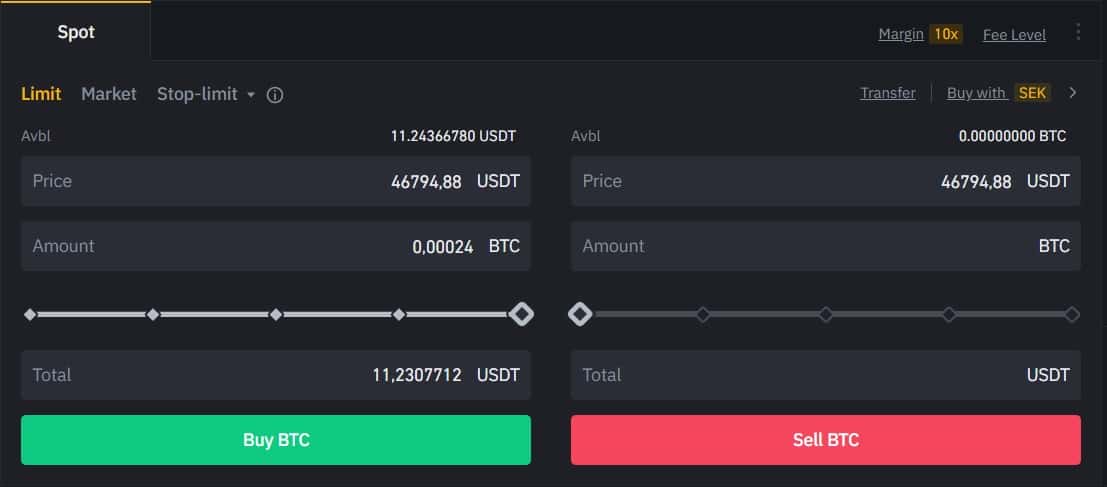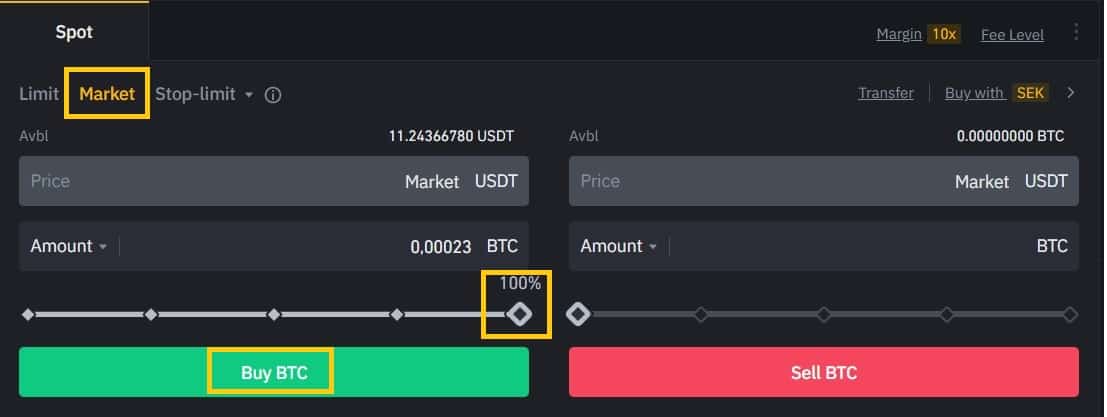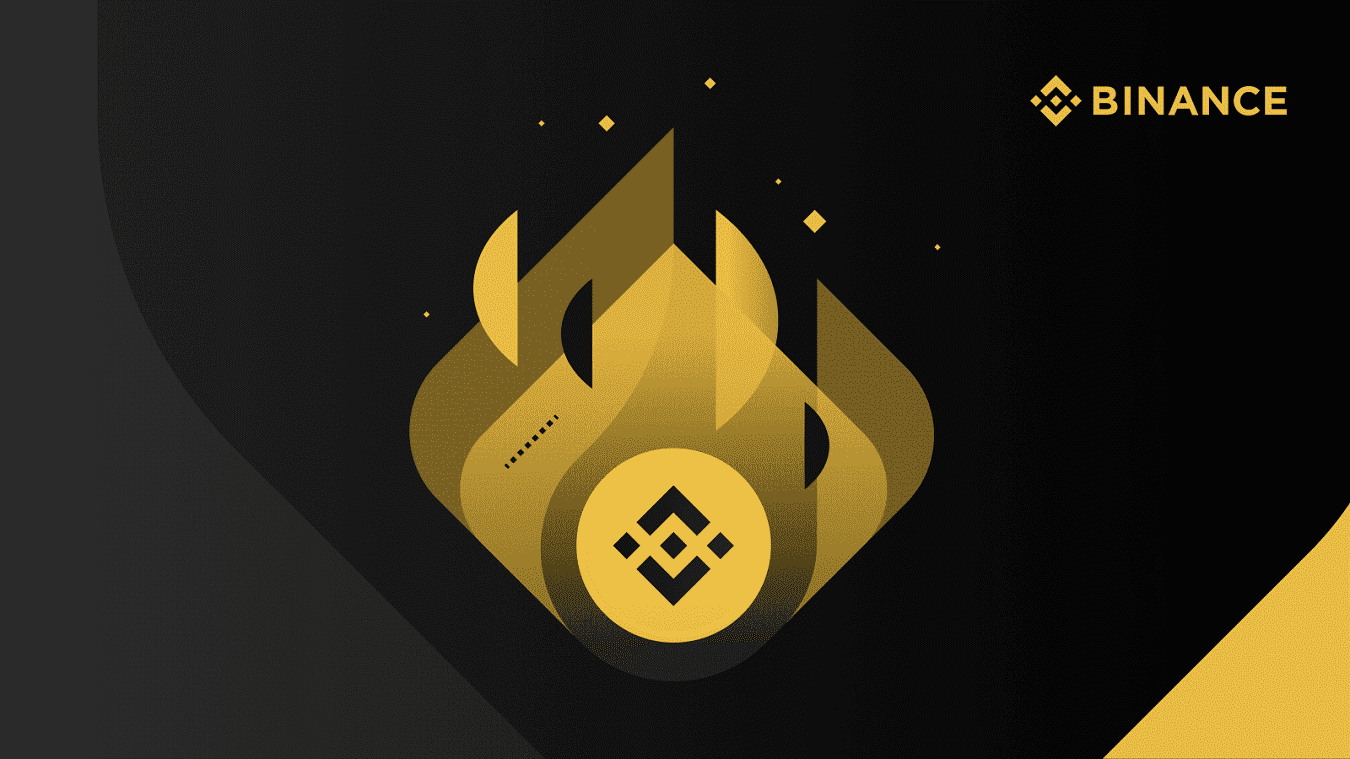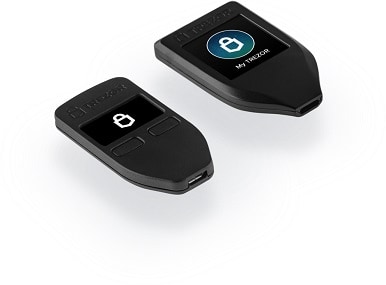How To Buy Binance Coin (BNB)?
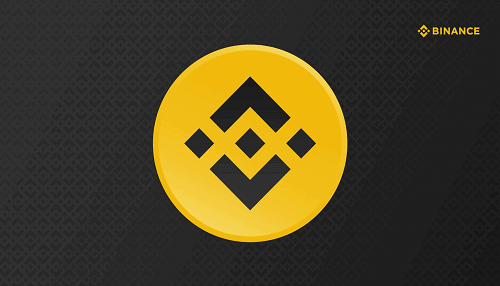
A common question you often see on social media from crypto beginners is “Where can I buy Binance Coin?” Well, you’ll be happy to hear it is actually quite a simple and straightforward process.
Step 1: Create an account on an exchange that supports Binance Coin (BNB)
First, you will need to open an account on a cryptocurrency exchange that supports Binance Coin (BNB).
We recommend the following based on functionality, reputation, security, support and fees:
1
Binance
Fees (Maker/Taker) 0.075%*-0.1%*
Cryptocurrencies
Available for Trade 500+
Sign-up bonus
10% reduced trading fees*
Available in
Europe, Asia, Oceania, Africa
2
Bybit
Fees (Maker/Taker) 0.1%*-0.1%*
Cryptocurrencies
Available for Trade 400+
Sign-up bonus
$30,000 sign-up bonus*
Available in
Europe, Asia, Oceania, Africa
In order to sign up, you will need to enter some basic information, such as your email address, password, full name and, in some cases, you might also be asked for a phone number or address.
Note: On specific exchanges, you might need to complete a Know Your Customer (KYC) procedure in order to be able to purchase cryptocurrency. This is most commonly the case with licensed and regulated exchanges.
Step 2: Deposit funds into your account
Many cryptocurrency exchanges will allow you to purchase Binance Coin (BNB) with fiat currencies, such as EUR, USD, AUD and others. Furthermore, they will also provide you with multiple deposit methods through which you can fund your fiat account, such as credit and debit cards, ewallets or direct bank transfers.
Note: Some payment methods will have higher fees than others, such as credit card payments. Before funding your fiat account on your chosen exchange, make sure to do your due diligence to find out the fees involved with each payment method to avoid unnecessary costs.
Step 3: Buy Binance Coin (BNB)
This process is similar across almost every cryptocurrency exchange. All you have to do is find a navigation bar or a search bar, and search for Binance Coin (BNB) or Binance Coin (BNB) trading pairs. Look for the section that will allow you to buy Binance Coin (BNB), and enter the amount of the cryptocurrency that you want to spend for Binance Coin (BNB) or the amount of fiat currency that you want to spend towards buying Binance Coin (BNB). The exchange will then calculate the equivalent amount of Binance Coin (BNB) based on the current market rate.
Note: Make sure to always double-check your transaction details, such as the amount of Binance Coin (BNB) you will be buying as well as the total cost of the purchase before you end up confirming the transaction. Furthermore, many cryptocurrency exchanges will offer you their own proprietary software wallet where you will be storing your cryptocurrencies; however, you can create your own individual software wallet, or purchase a hardware wallet for the highest level of protection.
How to create a Binance account
Show Detailed Instructions
Hide Detailed Instructions
Step 1: Go to the Binance website.
Step 2: On the registration page, enter your email address, and create a password for your account.
Then, read and agree to the Terms of Service and click “Create Account”.
Note: Your password must be a combination of numbers and letters.
It should contain at least 8 characters, one UPPER CASE letter, and one number.
Step 3: Complete the Security Verification.
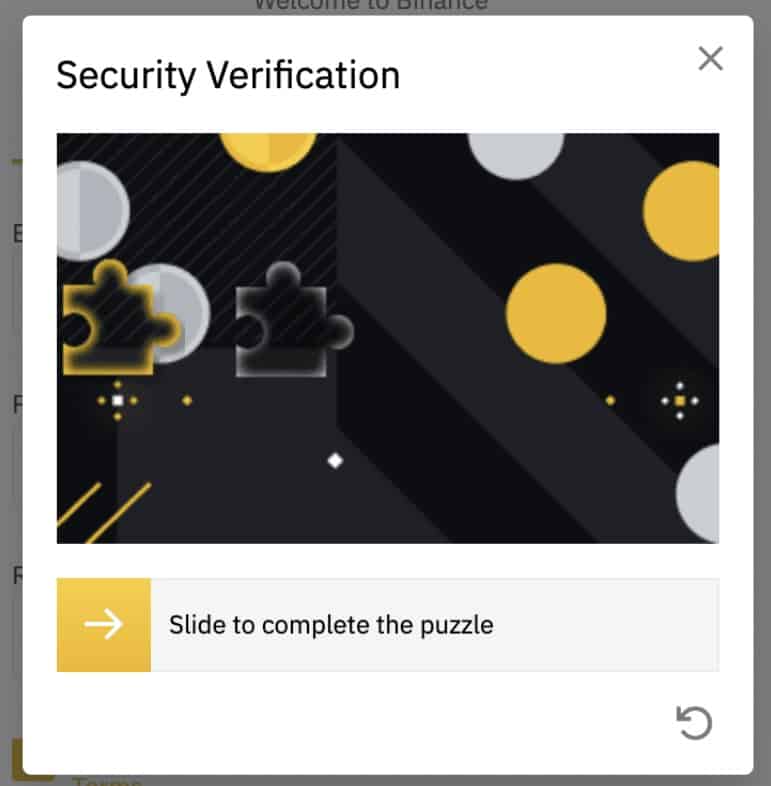
Step 4: The system will send a verification code to your email. The verification code is valid for 30 minutes. If you can’t find the email in your inbox, check your other mail folders as well, or click “Resend Email” to resend.
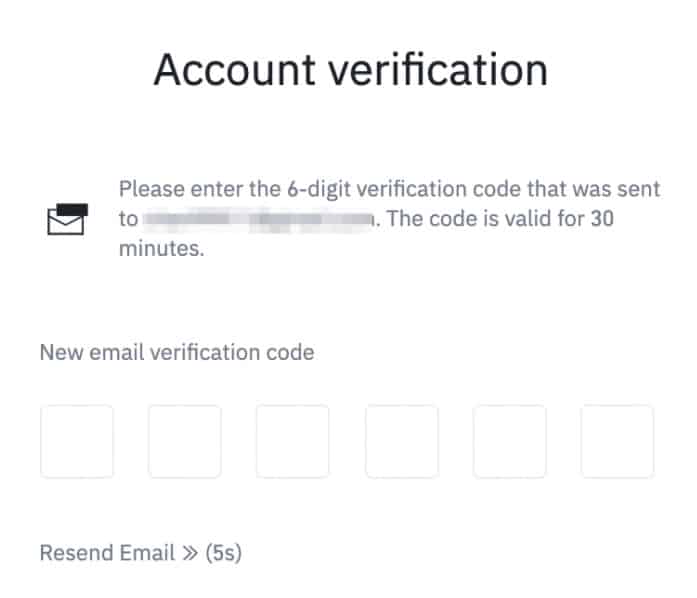
How to complete KYC (ID Verification) on Binance
Step 1: Log in to your Binance account and click “User Center” and then “Identification”.
Step 2: click “Start Now” to verify your account.
Step 3: Select your country of residence.
Ensure that your country of residence is consistent with your ID documents.
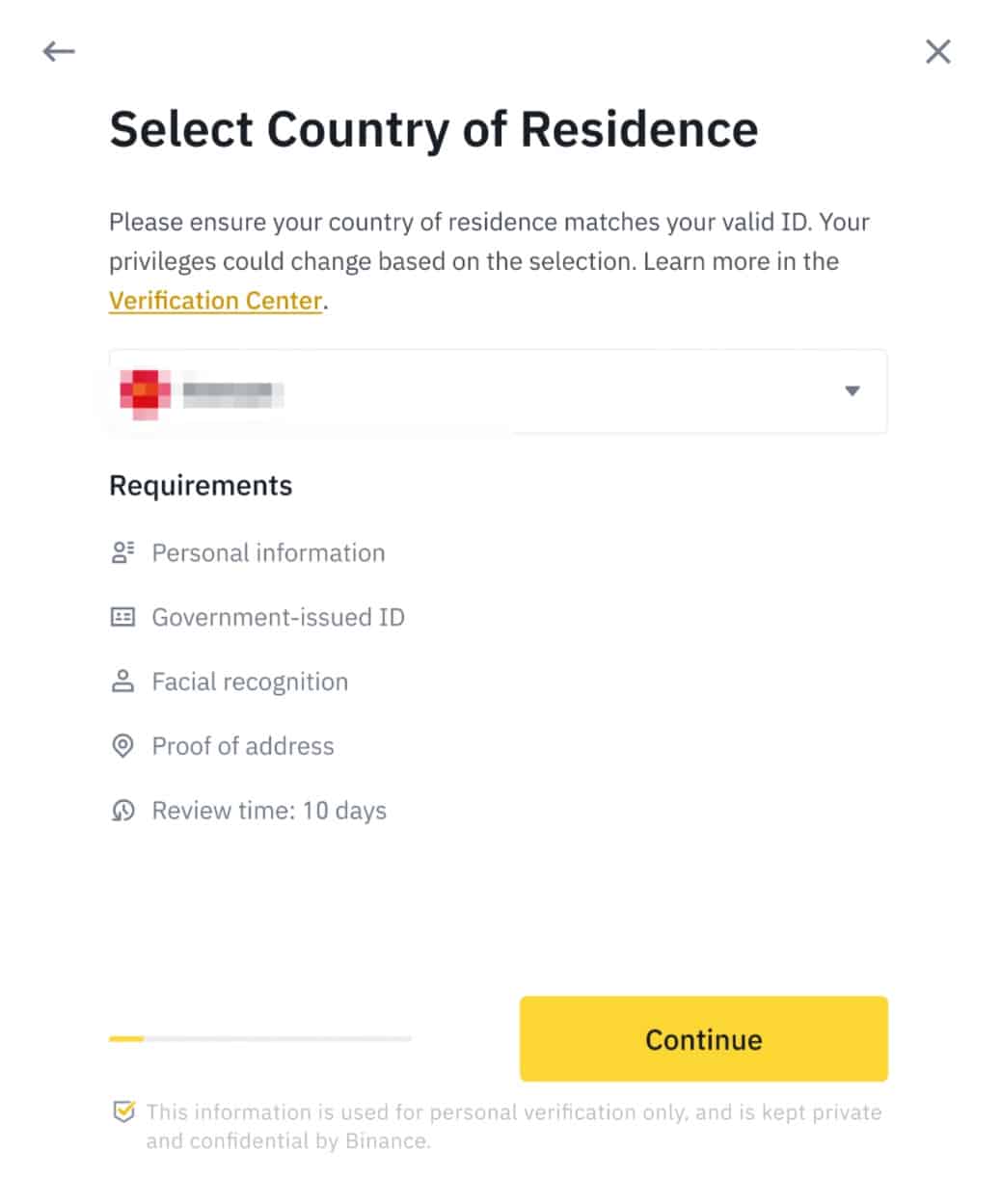
Step 5: Enter your personal information and click “Continue.”
You won’t be able to change it once confirmed.
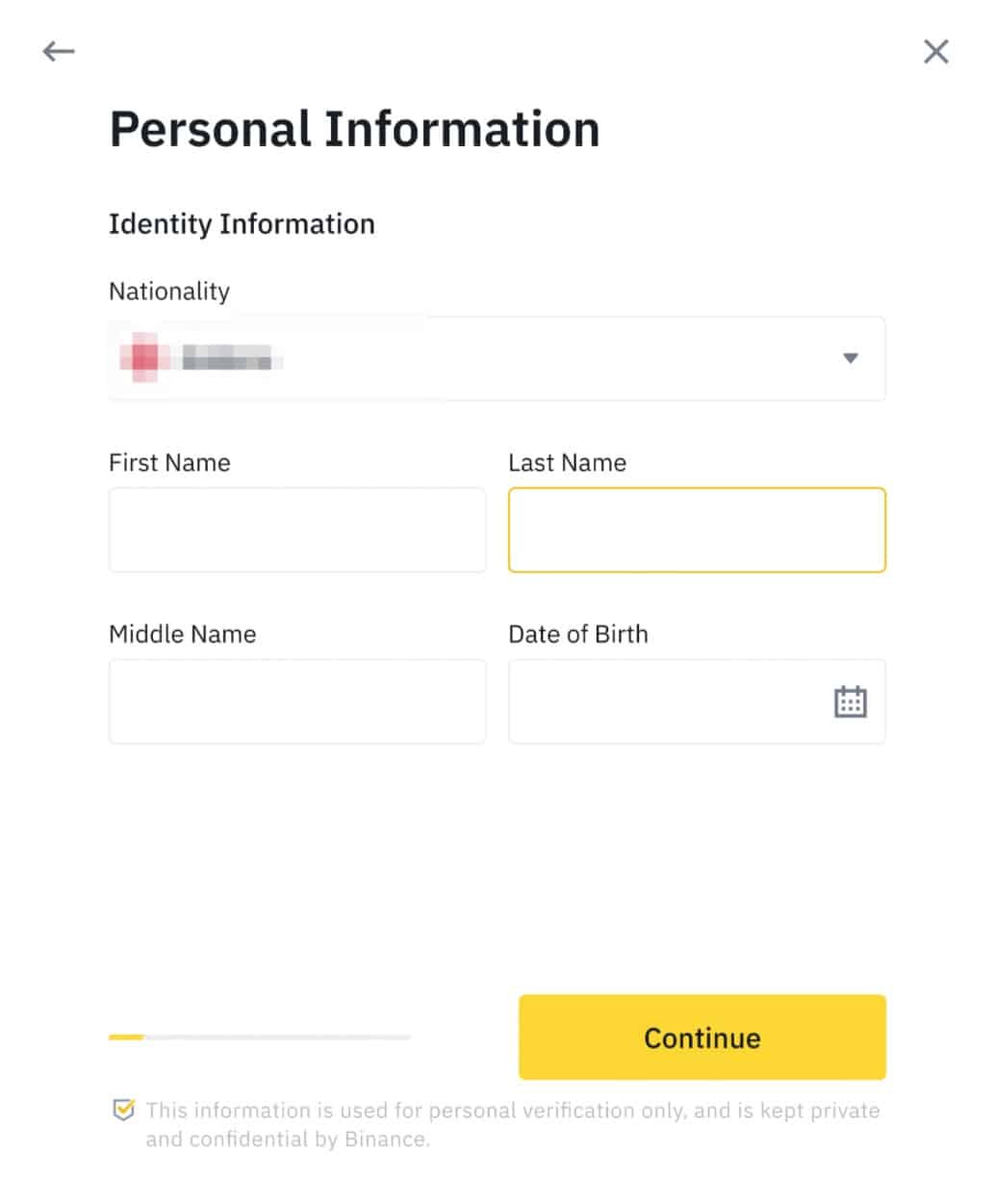
Refer to the respective options offered for your country.
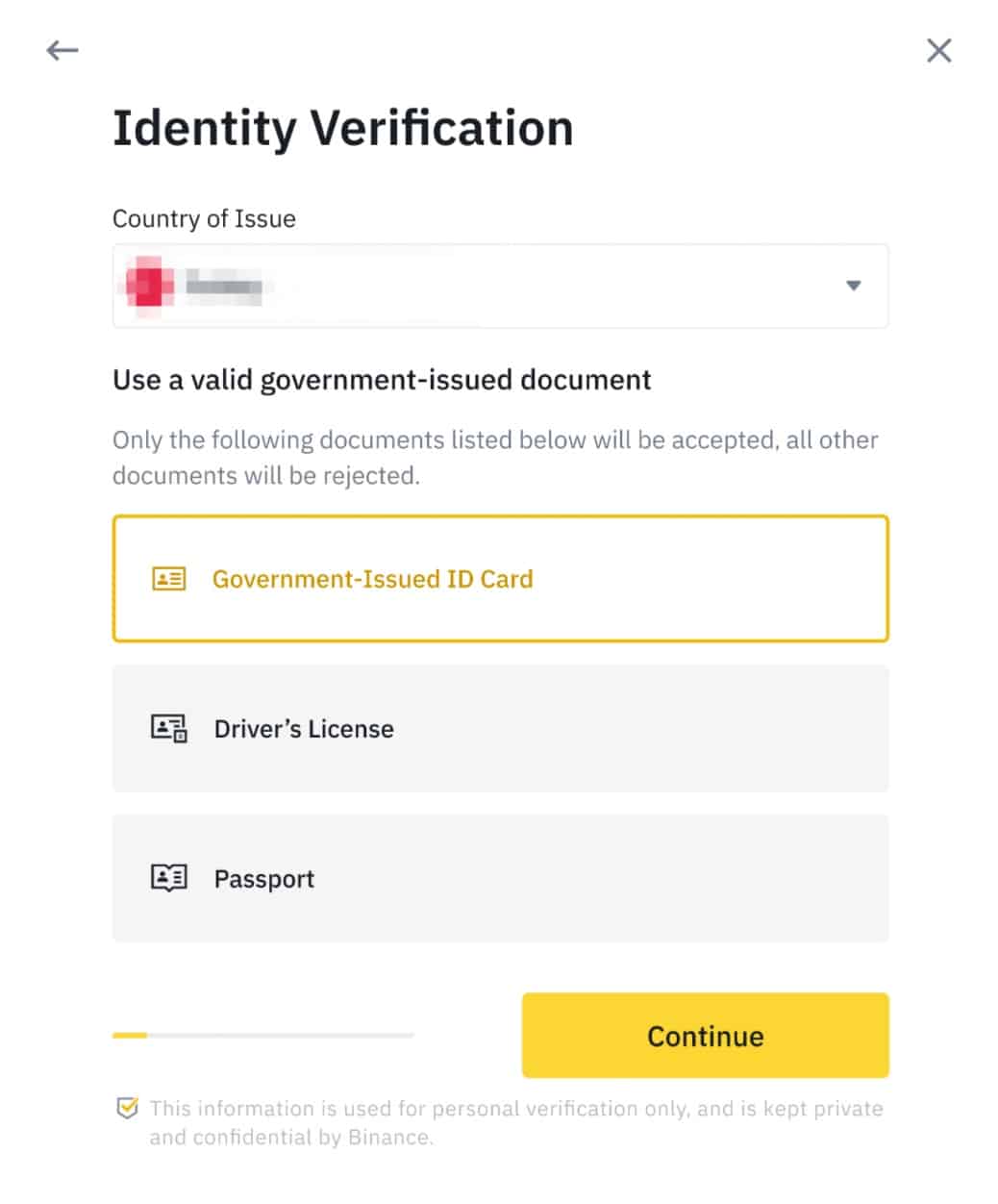
Step 7: Follow the instructions to upload photos of your document. Your photos should clearly show the full ID document.
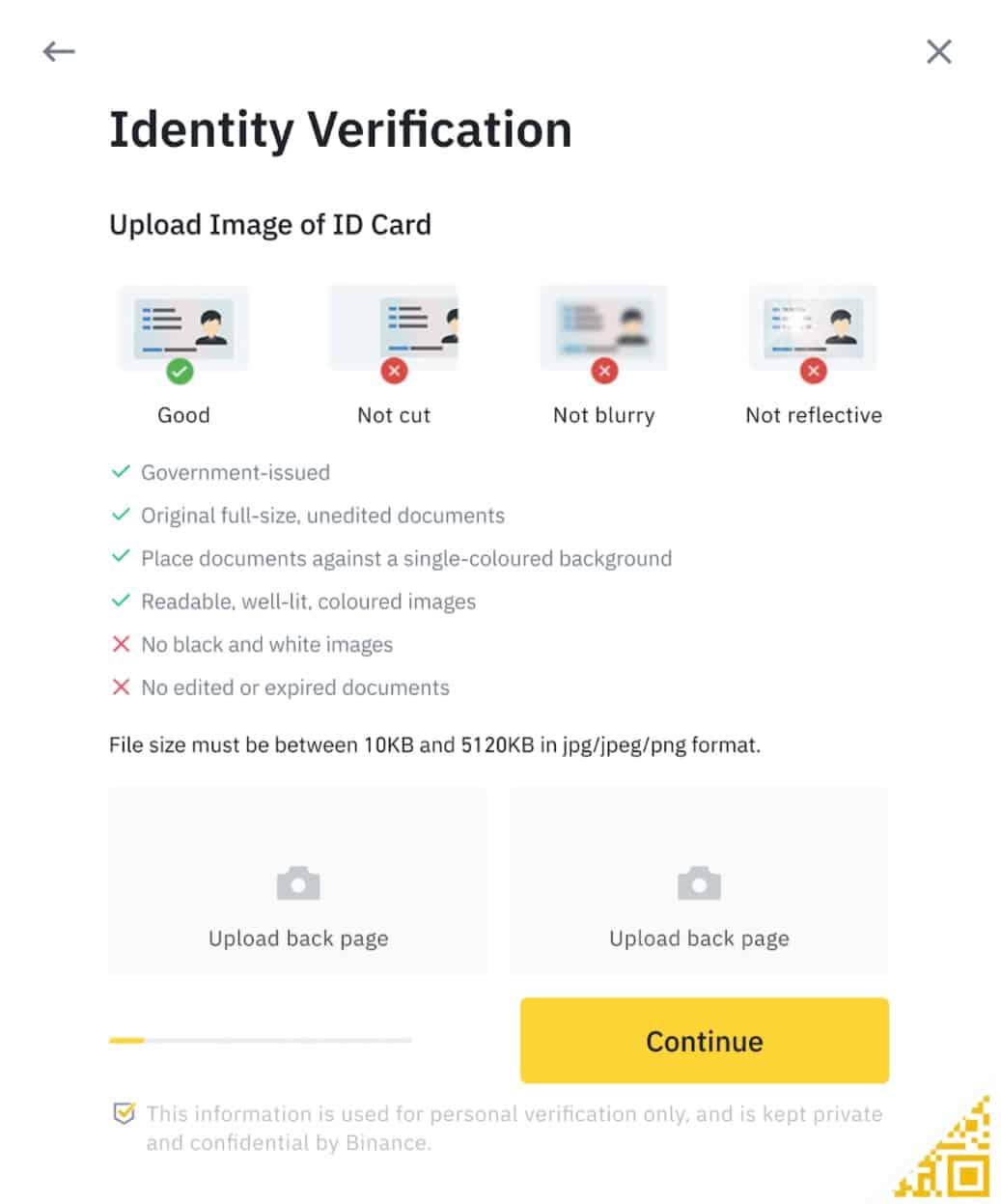
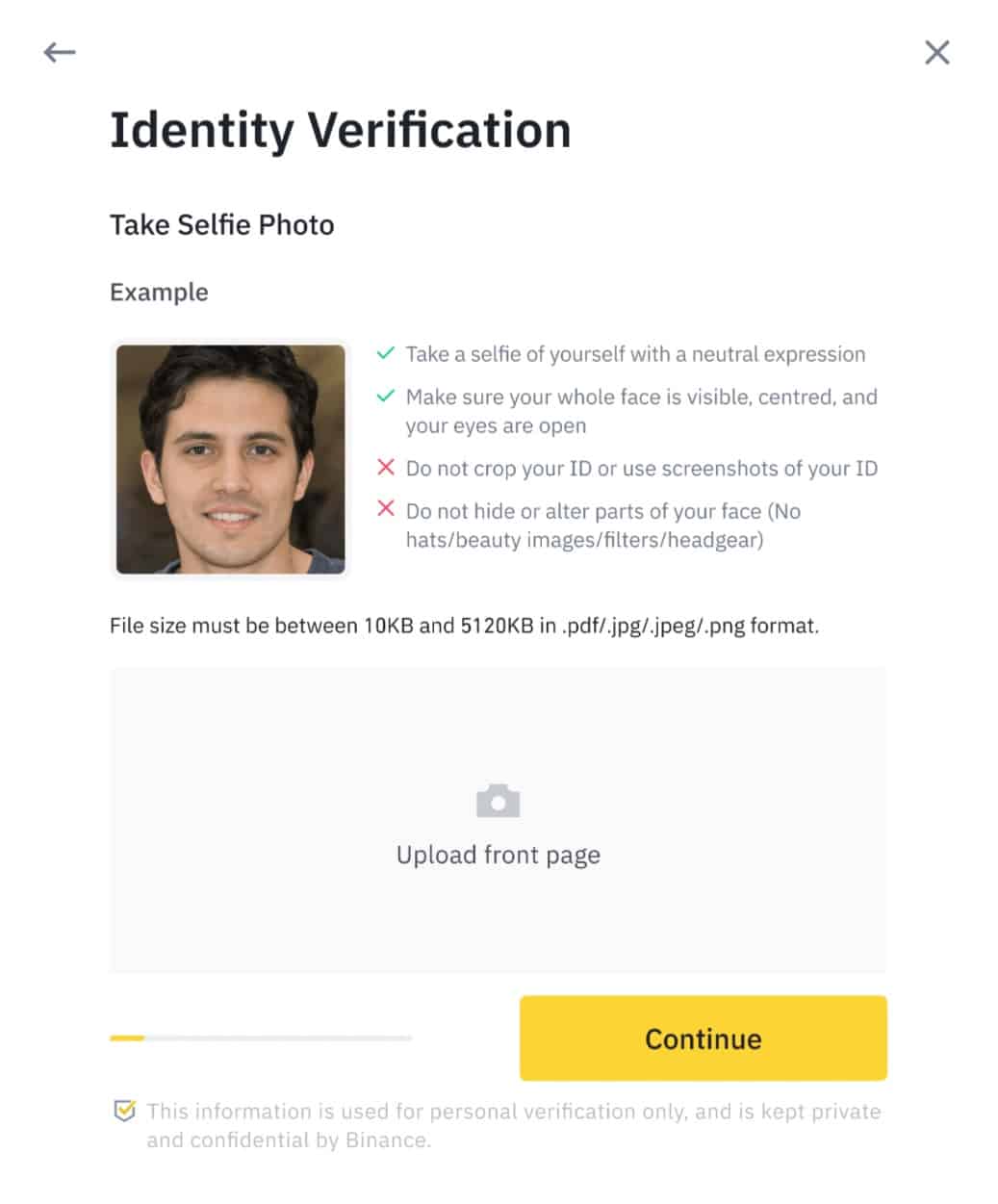
Do not wear hats, glasses, or use filters, and make sure that the lighting is sufficient.
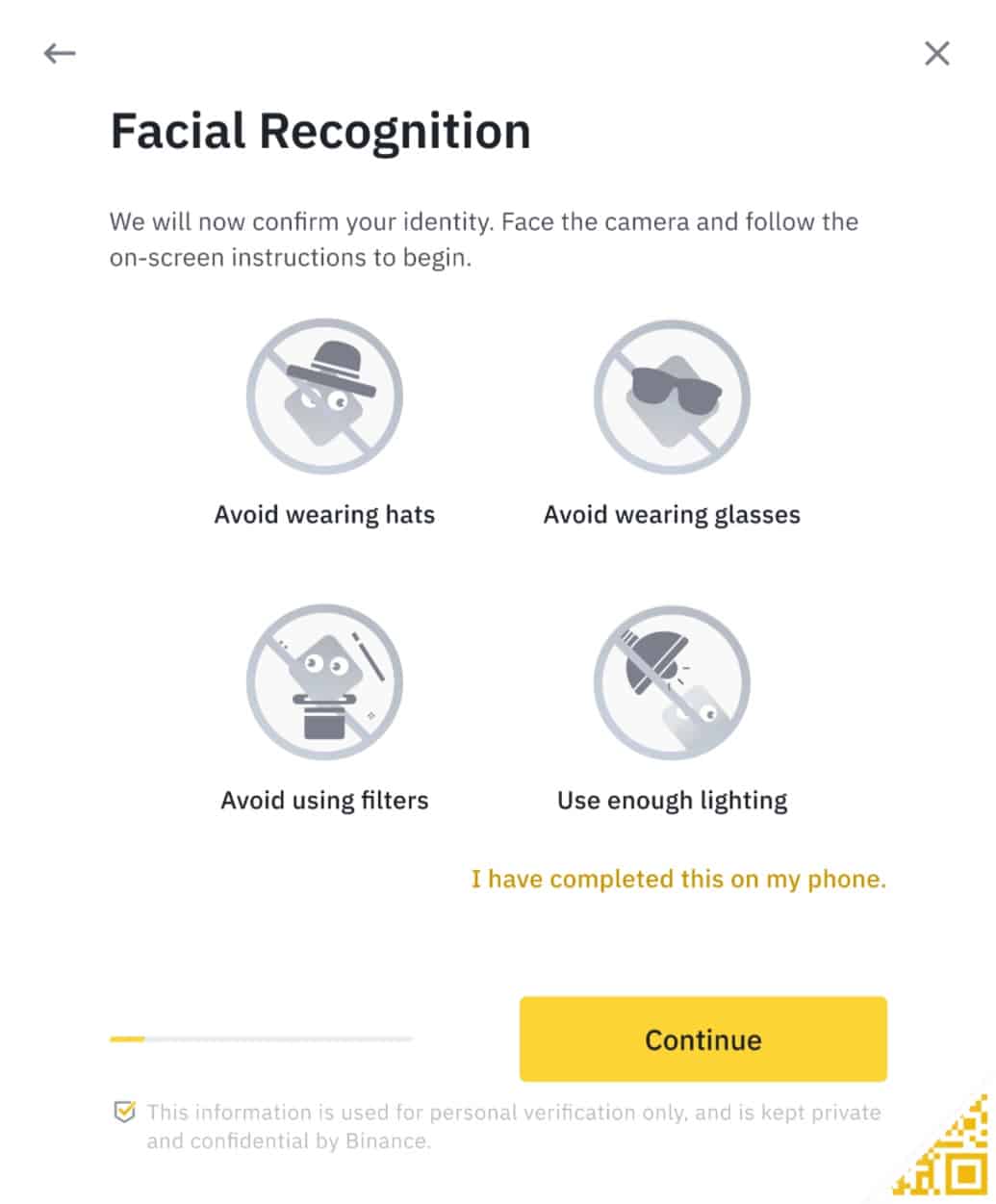
Once your application has been verified, you will receive an email notification.
How to buy cryptocurrency on Binance
Step 1: Log in to your Binance account and click “Buy Crypto” and then “Credit/Debit Card”.
Step 2: Here you can choose to buy crypto with different fiat currencies. Enter the fiat amount you want to spend and the system will automatically display the amount of crypto you can get. When you have selected the amount you wish to spend then press “Continue”.
Note: You might not be able to purchase every cryptocurrency directly using fiat, if you’re looking to purchase something that isn’t offered in the currency list on this page, then you will want to purchase USDT. We will then show you how to exchange that on the spot-market for the cryptocurrency that you want in the next section of this guide.
Step 3: Click “Add New Card”. Then enter your credit card details and your billing address.
Step 4: Check the payment details and confirm your order within 1 minute. After 1 minute, the price and the amount of crypto you will get will be recalculated. You can click “Refresh” to see the latest market price. You will then be redirected to your bank’s OTP Transaction Page. Follow the on-screen instructions to verify the payment.
How to Conduct Spot Trading on Binance
Step 1: Log in to your Binance account.
Click on “Classic” under “Trade” on the top navigation bar.
Step 2: Search and enter the cryptocurrency you want to trade.
Step 3: Set buying/selling prices and buying/selling amount (or exchange total). Then click on “Buy”/”Sell”.
(Note: The percentages under the “Amount” box refer to percentages of the total account balance.)
Step 4: If you don’t want to set a manual price, you can place a “Market Order” to set the buying/selling price automatically.
Hide Detailed Instructions
For more in-depth instructions, our ‘Absolute Beginner’s Guide To Cryptocurrency Investing‘ will take you through the process step-by step. In addition to providing instructions for sending and receiving your cryptocurrency.
And if you’re completely new to crypto our beginner, intermediate and advanced level articles will get you up to speed with everything you need to know about the cryptocurrency space starting out.
What is Binance Coin (BNB)?
Binance Coin (BNB) is the first and foremost representation of your stake in the Binance platform itself. If you believe that the company has the potential to expand even further, this will be reflected in the price of the BNB, which will give you the opportunity to sell it at a much higher price in the future compared to when you originally purchased it.
Aside from that, BNB functions exactly the same way as any other cryptocurrency running on any other blockchain. On the Binance exchange, you are able to trade BNB for any other token that is currently available. In addition, the company offers you a discount on the fees associated with currency transfers and exchanges if you pay for them in BNB rather than in other currencies, which acts as an incentive for you to hold BNB.
The token can be used by traders to pay fees on the platform, and developers can use it to power applications on the Binance Smart Chain. Examples of such applications include smart contracts (BSC).
As a result of the launch of their very own blockchains, Binance Chain in 2019 and Binance Smart Chain in 2020, BNB now has a third use case that is fundamentally distinct from the previous two: it can be used as a gas token. Similar to how Ether is the native asset of Ethereum’s blockchain, BNB is now the native asset of two blockchains that are interlinked and must be spent in order to complete any transaction on either of these blockchains. As a direct consequence of this, its price is now largely determined by the level of success achieved by the underlying blockchains.
In particular, the launch of the Binance Smart Chain (BSC) in April 2020, which enabled smart contract functionality analogous to that of the Ethereum blockchain, was an outstanding achievement and proved to be an enormous success. Many new decentralized exchange projects have been launched on the Binance Smart Chain as a result of the significant increase in transaction fees for decentralized exchange applications on Ethereum. Within the span of just one year, BSC had surpassed Ethereum in terms of the number of daily transactions by a factor that was between 5x and 10x larger.
Main Features of BNB
-
Pay for trading fees on Binance DEX (Decentralized Exchange)
-
Pay for transaction fees on the Binance Chain
-
Pay for transaction fees on the Binance Smart Chain
-
Pay for goods and services for both online and in-store purchases (e.g., using Binance Card or Binance Pay)
-
Book hotels, flights and more at Travala.com
-
Community utility token on the Binance Smart Chain ecosystem (such as games and DApps)
-
Participate in token sales hosted on the Binance Launchpad
-
Donate on Binance Charity
-
Provide liquidity on Binance Liquid Swap.
The Binance Coin (BNB) was initially distributed as an ERC-20 token, which operates on the Ethereum network and has a total supply of 200 million coins. During the initial coin offering (ICO), 100 million BNBs were made available for purchase; however, the total supply of BNBs that are currently in circulation is lower due to periodic burning events. During these events, Binance destroys BNB that is held in its treasury.
Although it was based on the Ethereum network at first, the ERC-20 BNB tokens were eventually exchanged for BEP-2 BNB at a ratio of 1:1. This occurred some time after the initial launch. The launch of the BEP-2 mainnet was announced on April 18th, 2019, and BNB is the native coin of the Binance Chain.
The Binance Smart Chain (BSC), a blockchain network that operates in parallel with the Binance Chain, was introduced in September 2020 by the cryptocurrency exchange Binance. This means that you can now find BNB in three different forms:
-
BNB BEP-2 on the Binance Chain.
-
BNB BEP-20 on the Binance Smart Chain.
-
BNB ERC-20 on the Ethereum network.
Who Are the Founders of Binance Coin?
Changpeng Zhao is the founder and CEO of Binance. In 2001, Zhao joined Bloomberg as head of tradebook futures development. He spent four years with the company and later joined Fusion Systems as a partner.
Since 2013, Changpeng Zhao has been actively involved with blockchain technology and cryptocurrencies. He became head of development at Blockchain.com, and in 2015 he founded BijieTech. In 2017, Zhao officially launched Binance, and he has been the CEO of the company ever since.
What is the BNB Burn?
Binance uses 20% of its earnings each quarter to buy back and burn Binance Coins, as stated in the whitepaper. Binance has done quarterly burns since the chain and token were created.
Binance will continue to burn currencies every quarter until 100 million Binance tokens, or half of the total supply, have been purchased and destroyed. The practice ensures that Binance Coin’s supply remains limited, making it scarce and valuable.
BNB also employs a real-time combustion mechanism based on gas fees. Each block burns a fixed proportion of the gas fee collected, with the proportion determined by BSC validators.
You can learn more about BNB burns at https://www.bnbburn.info/.
BINANCE CHAIN VS. BINANCE SMART CHAIN
To avoid confusion when dealing with BNB, let’s look at the fundamental differences between Binance Chain and Binance Smart Chain. On both blockchains, BNB can be sent, received, and stored. But why are there two chains, and what makes them different?
The Binance Chain was created to support and transact with the Binance Coin. The design is optimized for quick transactions on the Binance Decentralized Exchange as well as for the creation of digital assets. To meet these requirements, the Binance Chain’s structure was configured in a highly specific way, only allowing for limited smart contract functionality. The BEP2 token standard is used by Binance Chain.
Binance Smart Chain (BSC) was designed to support smart contracts, decentralized applications, and cryptocurrencies. It operates in parallel with the Binance Chain, but it is not considered a second layer solution or sidechain because it can function independently of the Binance Chain. It is Ethereum Virtual Machine (EVM) compatible, making it simple to migrate Ethereum projects to BSC. The BEP20 token standard is used by BSC.
When transferring BNB from the Binance exchange, users can choose between using the Binance Chain (BEP2) or the Binance Smart Chain (BEP20). Users must send it to a Binance Chain address or a Binance Smart Chain address, depending on which blockchain the recipient’s wallet is on.
They use a slightly different logo to help users distinguish between the two blockchains. Binance Chain has a white icon on top of a yellow circle, whereas Binance Smart Chain has a yellow icon on top of a black circle. To avoid confusion, which could result in a loss of funds in the worst-case scenario, it is strongly advised to double-check the blockchain and recipient address before transferring BNB coins.
Official website: https://www.binance.com/
Best cryptocurrency wallet for Binance Coin (BNB)
There are plenty of different crypto wallets available. The best one for you depends on your general trading habits and which provides the most security in your situation. There are two main types of wallets: hot storage wallets (digital) and cold storage or hardware wallets (physical). Both have their pros and cons, and there is not necessarily a right or wrong answer when it comes to figuring out which crypto wallet is best for you.
HOW DO I DECIDE WHICH cryptocurrency WALLET TO USE for Binance Coin (BNB)?
Deciding which type of wallet to use depends on a variety of factors, including:
- How often you trade. In general, hot wallets are better for more active cryptocurrency traders. Quick login ability means you are only a few clicks and taps away from buying and selling crypto. Cold wallets are better suited for those looking to make less frequent trades.
- What you want to trade. As mentioned earlier, not all wallets support all types of cryptocurrencies. However, some of the best crypto wallets have the power to trade hundreds of different currencies, providing more of a one-size-fits-all experience.
- Your peace of mind. For those worried about hacking, having a physical cold wallet stored in a safe deposit box at the bank or somewhere at home, provides the safest, most secure option. Others might be confident in their ability to keep their hot wallets secure.
- How much it costs. It is important to investigate the costs associated with each wallet. Many hot wallets will be free to set up. Meanwhile, cold wallets, like any piece of hardware, will cost money to purchase.
- What it can do. While the basics of each cryptocurrency wallet are the same, additional features can help set them apart. This is especially true of hot wallets, many of which come with advanced reporting features, insights into the crypto market, the ability to convert cryptocurrencies and more. Security features can also be a good differentiator.
For a more in-depth overview of cryptocurrency wallets visit our “Cryptocurrency Wallets Explained” guide.
If you’re going to be dealing in larger volumes of crypto, investing in cold storage might prove advantageous.
Most widespead examples of this being the Ledger Nano and the Trezor.
Ledger manufactures cold storage wallets designed for users who want increased security. Their wallets are a physical device that connects to your computer. Only when the device is connected can you send your cryptocurrency from it. Ledger offers a variety of products, such as the Ledger Nano S and the Ledger Nano X (a bluetooth connected hardware wallet).
Trezor is a pioneering hardware wallet company. The combination of world-class security with an intuitive interface and compatibility with other desktop wallets, makes it ideal for beginners and experts alike. The company has gained a lot of the Bitcoin community’s respect over the years. Trezor offers two main models – The Trezor One and Trezor Model T (which has a built in touch screen).
Binance Coin (BNB) Price & Charts
- Market Capitalization And Daily Trading Volume
- Current Market Price Of Every Cryptocurrency Relative To USD (And Some Local Currencies)
- Circulating And Total Supply
- Historical Charts With Prices Relative To USD, Bitcoin (BTC), And Ethereum (ETH).




